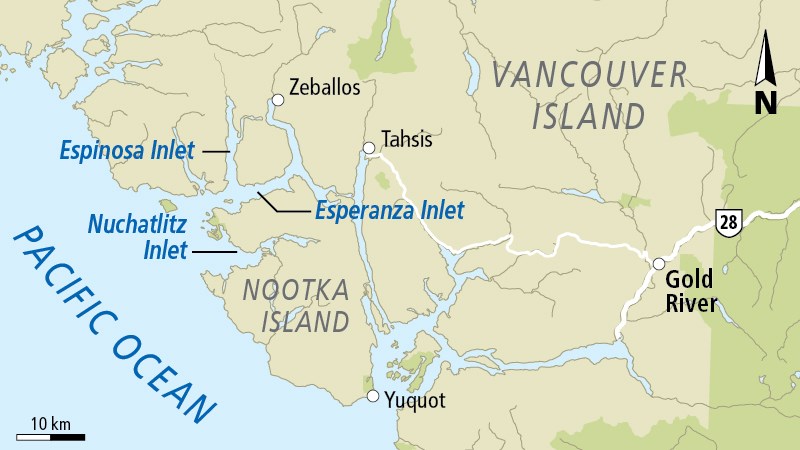A toxic algae bloom west of Vancouver Island has prompted shellfish harvest bans and may affect salmon stocks, federal scientists say.
The bloom stretches along the Pacific coast from California to B.C., making it possibly the largest one on record in the area, scientists have said. Although the cause is unknown, they believe the unseasonably warm weather plays a role, along with “the blob” — an enormous area of warmer-than-average water that appeared in the northeastern Pacific last fall. The blob has also been credited with the appearance of tropical species such as tuna in waters off B.C.
“We’ve seen record high temperatures all along the B.C. coast,” said Ian Perry, a research scientist with Fisheries and Oceans Canada.
“The really ‘nice’ period of weather we’ve been having — sunshine, not much freshwater runoff because of no rain — it helps produce conditions that are really conducive to these organisms.”
Researchers at the University of California, Santa Cruz say the bloom involves microscopic algae that produce a potent neurotoxin called domoic acid. The toxin accumulates in phytoplankton, shellfish and small fish such as anchovies that feed on the algae. While it doesn’t affect the shellfish and small fish, it can cause neurological problems in marine mammals, seabirds and humans who consume them.
The bloom stretches along Vancouver Island from Juan de Fuca Strait to Cape Scott.
But fisheries bans are in effect only in three areas of Vancouver Island, said Elysha Gordon, shellfish sanitation program co-ordinator for Fisheries and Oceans. They are located in and around Esperanza Inlet, Espinosa Inlet and Nuchatlitz Inlet, near Nootka Island, she said.
Bans come into effect when the level of domoic acid exceeds 20 micrograms per gram of tissue, according to Health Canada guidelines. Most of the samples collected by Fisheries and Oceans are just above that — about 21 or 22 micrograms per gram. In one case, a measure of 75 micrograms per gram was recorded, but a ban was already in effect in that area for other reasons.
The bloom is relatively weak along Vancouver Island, compared with American waters, where acid measurements have been up to 10 times as strong, Perry said.
An additional concern relates to salmon stock. The bloom has almost no crustaceans, but instead has a large number of gelatinous zooplankton, which is worrisome, Perry said. Young salmon typically migrate out of rivers and migrate along the coast of the Island at this time of year. “Because they’re small, they need to feed a lot and grow quickly to avoid predators. But with the lack of crill and other crustaceans, there is a concern they won’t find as much food,” Perry said.
The consequences could be seen in lower salmon stocks returning to rivers in two to four years, he said.
A list of biotoxin and sanitary fisheries closures is on the Fisheries and Oceans website atdfo-mpo.gc.ca.



